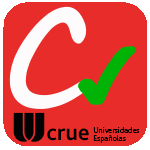Izenburua
Methodology to establish a hybrid model for prediction of cutting forces and chip thickness in orthogonal cutting condition close to broachingEgilea
Argitalpen data
2019Bertsioa
PostprintaDokumentu-mota
ArtikuluaArtikuluaHizkuntza
IngelesaEskubideak
© 2019 SpringerSarbidea
Sarbide irekiaArgitaratzailearen bertsioa
https://doi.org/10.1007/s00170-018-2962-1Non argitaratua
The International Journal of Advanced Manufacturing Technology Vol. 101. Nº 5–8. April, 2019Argitaratzailea
Springer NatureGako-hitzak
AISI 1045
Machining
Transmission gear
Orthogonal cutting ... [+]
Machining
Transmission gear
Orthogonal cutting ... [+]
AISI 1045
Machining
Transmission gear
Orthogonal cutting
Broaching
ODS 9 Industria, innovación e infraestructura [-]
Machining
Transmission gear
Orthogonal cutting
Broaching
ODS 9 Industria, innovación e infraestructura [-]
Laburpena
Broaching is a widely used finishing operation for the manufacturing of transmission gears which are commonly made of steel AISI 1045. Therefore, there is a high interest for industry to understand th ... [+]
Broaching is a widely used finishing operation for the manufacturing of transmission gears which are commonly made of steel AISI 1045. Therefore, there is a high interest for industry to understand the metal cutting process and modelling could shed light on it. In the present work, an innovative methodology to establish a hybrid model based on the combination of empirical, numerical and analytical approaches, is presented. The hybrid model improves the cutting force, feed force and chip thickness predictions when compared to the results obtained with the empirical, numerical or analytical ones separately. The empirical model was developed by carrying out experimental tests under orthogonal condition close to broaching. The analytical method uses the Oxley law extended to the proposed flow stress model. DEFORM-2D software was used for the finite element model development with a specific subroutine for the constitutive model. The influence of each approach in the hybrid model was calculated based on a statistical analysis between experimental and model results. Moreover, to achieve better predictions in the numerical and analytical models, the material was characterized by static and dynamic compression tests to take into account strain softening and coupling between strain rate and temperature phenomena, not considered in the commonly used Johnson-Cook law. Furthermore, the hybrid model was validated with additional experimental tests, to demonstrate its validity in a wide range of cutting conditions. The relative error obtained with the hybrid model in force and chip thickness predictions were 6% and 12% respectively, reducing more than three times the maximum error in comparison to any other approach. [-]





















